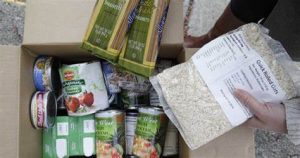In Montana, the distribution of SNAP (Supplemental Nutrition Assistance Program) payments spans five days, with December’s payments initiated on December 2 and slated to conclude by Wednesday. The specific date individuals receive their payments hinges on factors such as their SNAP case number, account number, Social Security number, or last name.

The amount of SNAP payments is contingent on the household size of recipients. Single-person households, for instance, receive $291 monthly, while larger households, up to eight people, may receive a maximum of $1,751 per month. For households exceeding eight members, an additional $219 is allocated for each extra person.
These SNAP benefits are flexible and can be utilized at various locations, including farmers markets and grocery stores. Recipients receive their payments on an electronic benefits transfer (EBT) card, with automatic reloading occurring every month.
To be eligible for SNAP payments in Montana, a single-person household must not exceed a net monthly income of $1,215, while an eight-person household should stay below $4,214 in net monthly income.
Established as part of President Lyndon B. Johnson’s Great Society programs through the 1964 Food Stamp Act, SNAP serves the overarching goal of enhancing the nutrition of economically disadvantaged individuals by supplementing their food-related expenses. It operates nationwide, extending its reach across all states and Washington, D.C.
Key features of the Montana SNAP program include:
1. Income Eligibility: To qualify for SNAP benefits in Montana, applicants must meet certain income requirements. The income limits vary based on household size and composition. Generally, the net income (income after deductions) must be within the specified limits.
2. Benefit Amounts: The amount of SNAP benefits a household receives is determined by factors such as the number of people in the household, their income, and certain expenses. Larger households receive higher benefits, with an additional amount allocated for each additional family member.
3. Distribution Period: Montana distributes SNAP payments over five days each month. The specific date on which recipients receive their benefits depends on factors such as their case number, account number, Social Security number, or last name.
4. Electronic Benefits Transfer (EBT): SNAP benefits are provided through an EBT card, which is similar to a debit card. Recipients can use this card to purchase eligible food items at authorized retailers, including grocery stores and farmers markets.
5. Nutritional Support: The primary goal of the SNAP program is to improve the nutrition of low-income individuals and families. By providing financial assistance for purchasing food, SNAP aims to ensure that participants have access to a balanced and healthy diet.
The Montana SNAP program plays a crucial role in addressing food insecurity and promoting the well-being of vulnerable populations by helping them meet their nutritional needs.




